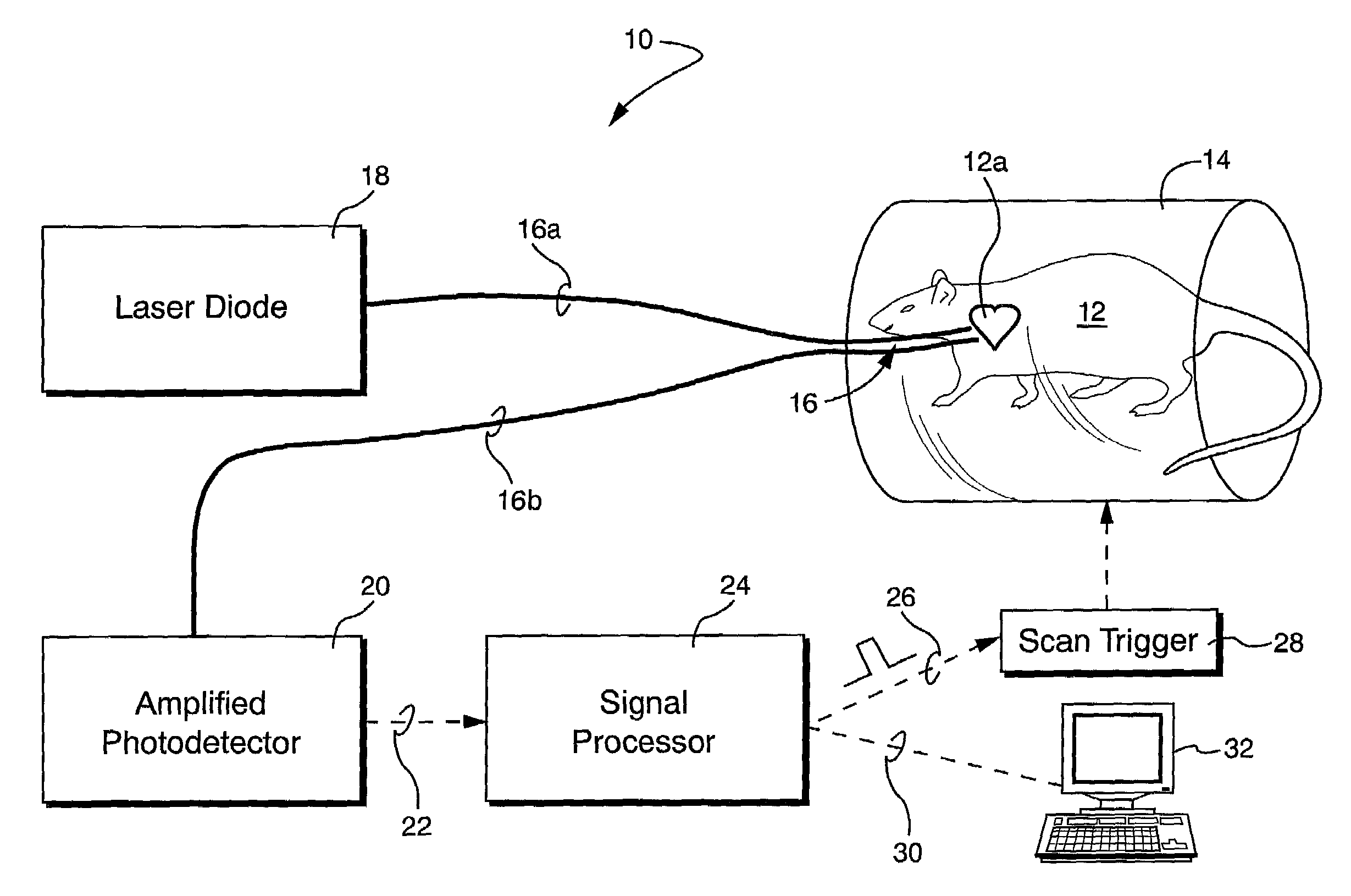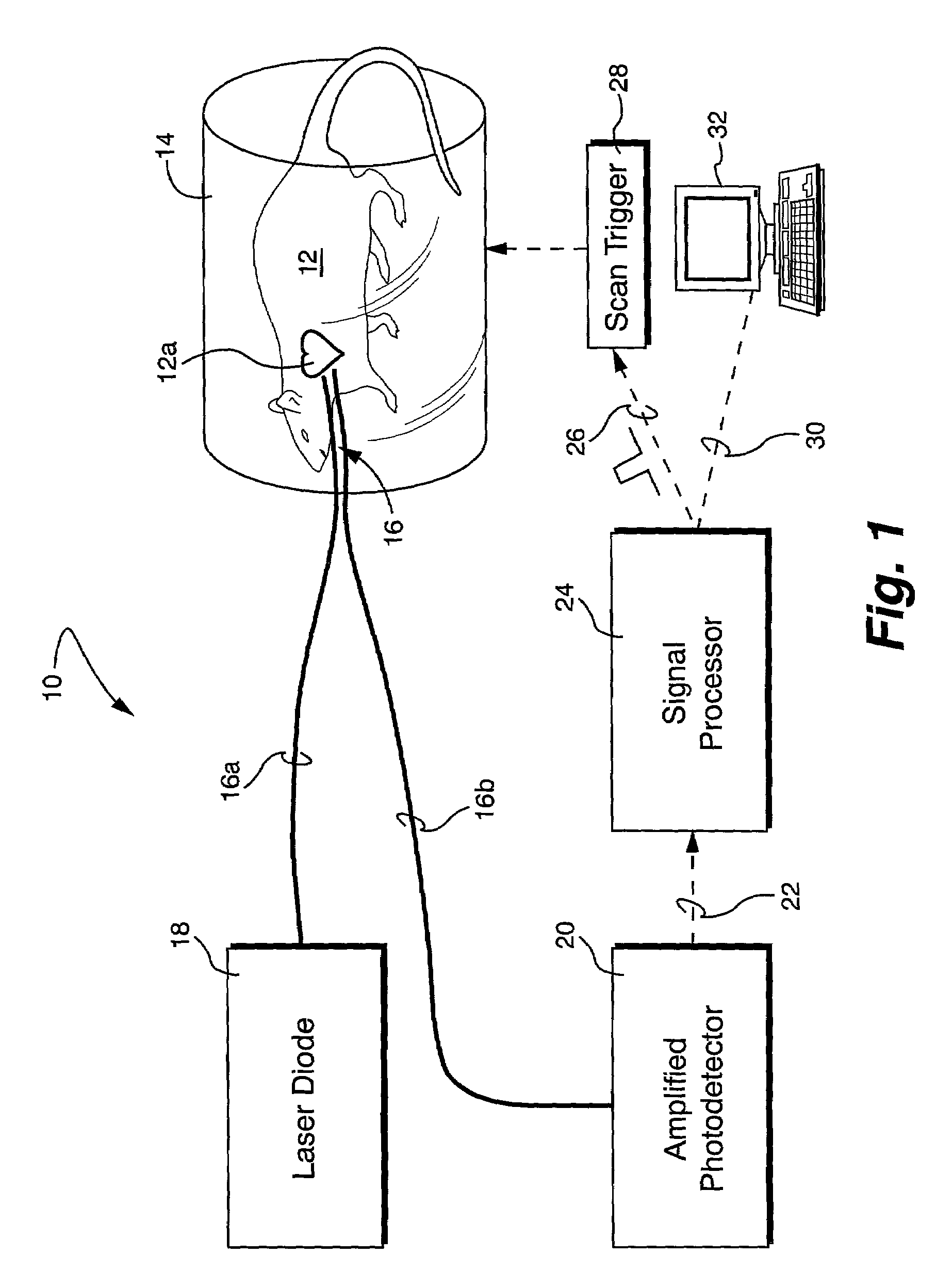MR-compatible methods and systems for cardiac monitoring and gating
a technology of cardiac monitoring and gating, which is applied in the field of magnetic resonance imaging, can solve the problems of ecg signal corruption, erroneous cardiac gating, and none of these conventional methods have been shown to provide reliable monitoring and gating ability, and achieve high spatial and temporal resolution
- Summary
- Abstract
- Description
- Claims
- Application Information
AI Technical Summary
Benefits of technology
Problems solved by technology
Method used
Image
Examples
example
[0016]A system 10 as shown in FIG. 1 was employed. Specifically, two 5-m step-index multimode optical fibers (Thorlabs, Newton, N.J.) were used as the transmit and receive optical fibers 16a, 16b, respectively. The last 10 cm of each fiber was stripped of buffer, and the bare fibers were bundled together for total diameter of 250 microns. The fiber tips were cleaved at appropriate angles to maximize light detection. Light from a collimated 40 mW, 650 nm laser diode (Thorlabs), selected for its minimal tissue absorption, was focused into the transmit fiber 16a using an optical lens.
[0017]Twenty-eight rats (150 g–250 g) and one C57 mouse (40 g) were intubated and anesthetized with isoflurane delivered b ventilator as described more fully in Hedlund et al, Magn. Res. Img., 18, 753–759 (2000), the entire content of which is expressly incorporated hereinto by reference. Pediatric electrodes were taped to the animal's footpads to acquire a reference ECG signal. Average heart rates were 30...
PUM
 Login to View More
Login to View More Abstract
Description
Claims
Application Information
 Login to View More
Login to View More - R&D
- Intellectual Property
- Life Sciences
- Materials
- Tech Scout
- Unparalleled Data Quality
- Higher Quality Content
- 60% Fewer Hallucinations
Browse by: Latest US Patents, China's latest patents, Technical Efficacy Thesaurus, Application Domain, Technology Topic, Popular Technical Reports.
© 2025 PatSnap. All rights reserved.Legal|Privacy policy|Modern Slavery Act Transparency Statement|Sitemap|About US| Contact US: help@patsnap.com



